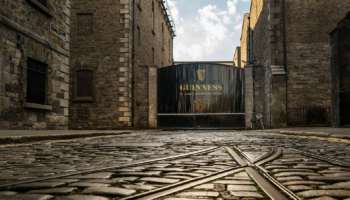Every March 17th, thousands of people put on their greenest garb, march in Irish pride parades, eat green clover-shaped cookies, and quaff frosty mugs of green beer in celebration of St. Patrick’s Day. But do you really know who St. Patrick was and why he is celebrated?
We collected some interesting facts about Ireland, St. Patrick and his holiday celebration so to explain why this day is so loved and popular not only in Ireland but around the world.
St. Patrick was a patron of Ireland. He was born in Bannavem Taberniae England around 386AD and died on March 17th 460 AD.
At the age of 16 St. Patrick was sold into slavery. He was brought to Ireland and worked as a shepherd. At the age of 22 he escaped slavery. He dedicated himself to the Christian religion. He studied in a monastery of Le’rins off the coast of France and in France with Saint Germanius a French Bishop. St. Patrick returned to Ireland in his 30’s. He is credited for brining the religion of Christianity to Ireland.

St. Patrick’s Day or also known as St. Patrick Feast Day is celebrated on March 17th in honor of the anniversary of his death. St. Patrick’s Feast Day became an office celebration in the 17th century. The celebration is observed by the Catholic Church, Anglican Communion Church, Eastern Orthodox Church and Lutheran Church.

Legend says that St. Patrick used a shamrock to explain the Holy Trinity to the Irish. He used the clover to represent three separate parts (3 leaves of the clover) of the same being. The first leaf was God the Father, second leaf the Son and the third leaf the Holy Spirit. The shamrock is now the offical flower of Ireland. The highest number of leaves found on a shamrock clover was 14. It is listed in the Guinness Book of World Records. Legend says that finding a four-leaf clover on St. Patrick’s Day will bring you luck. Each clover leaf represents something different. First leaf represents hope, second leaf represents faith, third leaf represents love and the fourth leaf represents luck.

There are many legends about St. Patrick. One story states that he drove all the snakes out of Ireland. He didn’t really drive snakes out of Ireland. The snakes represent the pagans he converted to Christianity. Saint Patrick’s Cathedral in Dublin founded in 1191, is the largest church in Ireland and one of Dublin’s two Church of Ireland cathedrals. It has a 43-metre (140 feet) spire.
Did you know that the original color for St. Patrick was blue? In Irish legends and stories green was worn by fairies and immortals. It was also believed that wearing green would help make a good growing season for their crops in Ireland. Green became the color for St. Patrick’s Day in the early 19th century. The color green represents Ireland. Ireland is also called “The Emerald Isle.”
The Irish flag is green, white and orange. Green represents the people of the South, Orange represents the people of the North and White represents the peace that brings the North and South together.

In Dublin they celebrate the St. Patrick’s Day Festival March 15th -19th. During the St. Patrick’s Day Festival there is a parade, carnival, treasure hunt and dances. In Ireland people wear shamrocks on their jackets and hats. Children wear green, white and orange (colors of their flag) and girls wear green ribbons in their hair.

St. Patrick’s Day celebrations are held not only in Ireland but around the world in countries such as Canada, Japan,Montserrat (an Island in the Caribbean), New Zealand, Australia, Russia, Great Britain, Argentina, Switzerland, South Korea and United States. In Chicago the Chicago River is temporarily died green in honor of St. Patrick’s Day.

Well, if you are inspired about Ireland as much as we do you are welcome to join us in our 14 days amazing trip this August to learn more and experience how is it to be Irish by your own.










